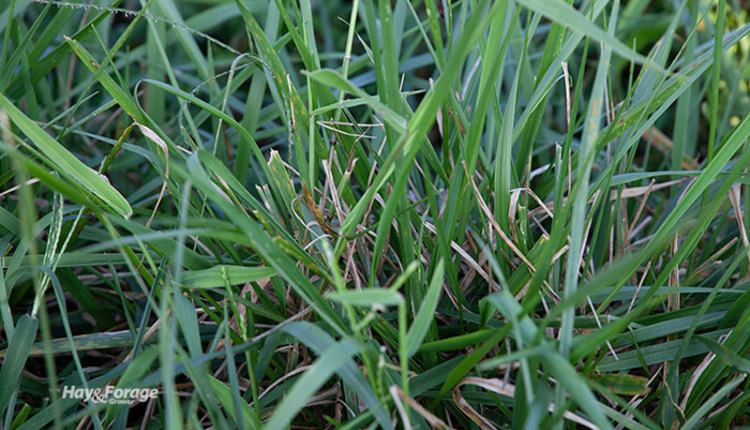Step up to the stockpiling plate |
| By Amber Friedrichsen, Associate Editor |
|
|
 As the seasons will soon begin to change, so will grazing management for many operations. Instead of continuing to rotate livestock on every paddock, producers may decide to reserve some of their acres for stockpiling forage. The time to decide this is now. Stockpiling forage can reduce feed costs by extending grazing into the winter. Matt Poore with North Carolina State University says any type of forage can be stockpiled, but tall fescue is one of the most common. Start to stockpile at the correct time will maximize the crop’s quality and yield; however, start dates vary depending on location. For states in the central part of the Fescue Belt, Poore recommends starting to stockpile between August 15 and September 15. Ideally, begin the process earlier in more Northern regions. In Southern regions, stockpiling can wait until after September 15. “The goal is to get at least 60 days of good growth so there is a substantial amount of forage accumulated,” the extension ruminant nutrition specialist explains in a recent issue of the Alliance for Grassland Renewal’s newsletter. “If you delay stockpiling, the resulting forage will have higher nutritive value, but there will not be as much of it.” Although pastures consisting of bermudagrass, warm-season mixes, and even summer annuals can also be stockpiled, tall fescue is better equipped to withstand winter weather conditions. It has been shown to maintain high levels of nutrients into the following calendar year. “Even in February across the Fescue Belt, stockpiled tall fescue will usually meet the nutritional requirements of a lactating cow with a moderate level of milk production,” Poore states. “The other forages need to be used in autumn or early winter.” Have a plan Planning ahead is essential for successful stockpiling. Designated areas can be clipped or grazed until late summer, but then livestock need to be removed to allow time for forage to grow. At this time, consider whether or not applying nitrogen is necessary. Poore says older pastures that have been rotationally grazed in the past might already have high levels of biological activity in the soil, so applying nitrogen to them may not have a significant impact. “If you have been practicing adaptive grazing for a long time, you might consider not putting nitrogen on some pastures to see how much grass you can grow without it,” Poore suggests. On the other hand, newly established stands or those that have not been managed with rotational grazing could benefit from fertilization. If this is the case, Poore recommends applying 50 pounds of nitrogen per acre. To ensure pastures produce an adequate amount of forage, some farmers feed hay during the months of October and/or November. Additionally, reducing a herd’s stocking rate will result in more forage available per animal. Once a stockpiled pasture is ready to be grazed, utilize a strip grazing approach. Install temporary fencing and use reels to control the area cattle have access to and improve grazing efficiency. “If you have never stockpiled forage for winter grazing, I encourage you to give it a try,” Poore states. “Once a farmer starts this, it is usually a practice they continue, and their focus on strip-grazing during winter carries over into better grazing practices the rest of the year.”  Amber Friedrichsen Amber Friedrichsen served as the 2021 Hay & Forage Grower editorial intern. She currently attends Iowa State University where she is majoring in agriculture and life sciences education-communications with a minor in agronomy. Friedrichsen grew up on her family’s diversified crop and livestock farm near Clinton, Iowa. |
